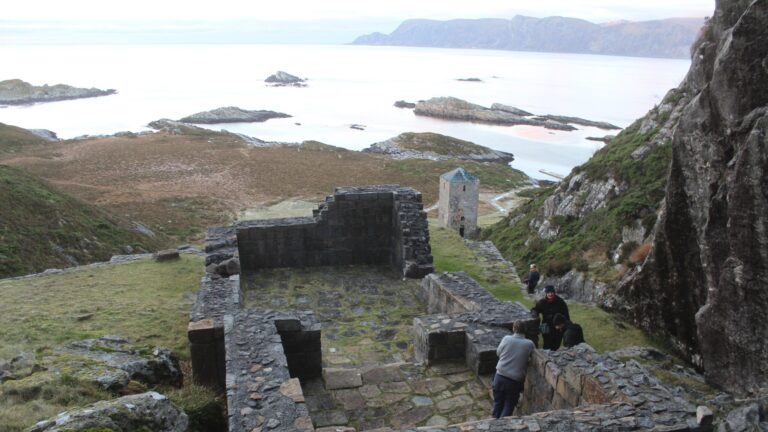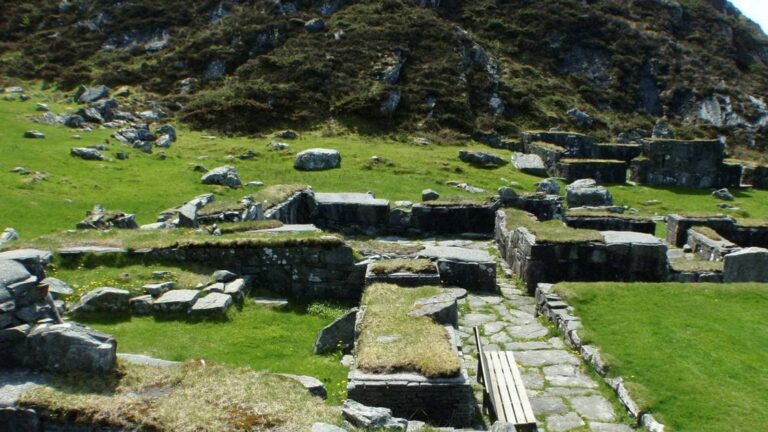Mythology meets history! Archaeologists have discovered remains of what could be Norway's oldest known church near Norway's westernmost point.
Archaeologists have uncovered evidence suggesting that the ruins of Sunnivakyrkja, a church on the island of Selja, may be significantly older than previously thought, potentially making it the oldest church in Norway.

The legend of Selja dates back to 996 when Olav Tryggvason is said to have found the remains of Saint Sunniva and built a church on what he called “the eternal island against the Stadhavet.”
Stadhavet is at Norway's westernmost point and known for its rough seas. However, archaeological evidence had dated the construction of Sunnivakyrkja to 1068, decades after Tryggvason's death around 999.
Now, new findings within the church ruins indicate that the foundation of Sunnivakyrkja might indeed date back to Tryggvason's time.
Read more: Norway's Churches In Pictures
NIKU archaeologist Regin Meyer notes that this phase of the building must be older than previously believed: “It seems likely that the craftsmanship was sourced by the builder from the other side of the North Sea.”
Excitement Among Researchers
The discovery has sparked excitement among historians and archaeologists alike. Anne Irene Risøy, a professor at USN's Institute for Culture, Religion, and Social Studies, expressed her amazement to NRK:
“The only comment I have now is simply wow. If this is true, it's absolutely fantastic.”

Ola Fjeldheim from the National Trust of Norway (Fortidsminneforeningen) emphasized the importance of such discoveries in enhancing our understanding of history:
“Findings like this show how important it is to keep our eyes open, so we can add new pieces to the puzzle of our own history.”
Preservation and Future Research
Norway's medieval heritage includes around 300 stone churches, most of which were built after the establishment of the Nidaros Archdiocese in 1152. The government recently launched a billion-dollar initiative to save the 159 remaining stone churches from deterioration.
Aleksis Immonen, a professor at the University of Bergen, emphasized the ongoing importance of research at Selja:
“The new investigation shows that it is still possible to find new important information about the site. It seems certain that there was an earlier church on the site before the bishopric was established at Selja. The dating of this building is still uncertain, but it could align with an Anglo-Saxon style, consistent with early Christianity in Norway.”
Modern Conflicts
Selja's historical significance has also brought modern challenges. Recently, the municipality of Stad considered allowing fish farming facilities in the sea areas around the monastery, which sparked controversy.
The bishop expressed concern that such facilities would ruin the visual horizon and disrupt the historical experience.
The Legend of Saint Sunniva
According to legend, Sunniva was an Irish princess who fled her homeland to avoid marriage to a heathen king. She and her followers drifted northward without oars or sails, eventually landing on Selja.
They hid in a cave to escape Håkon Jarl and his army, and a rockslide sealed their fate. Sunniva's body was later found intact among her followers' remains, leading to her veneration as a saint.
The recent discoveries highlight the importance of building archaeology in understanding historical sites. As new layers of history are uncovered at Selja, these findings promise to further enrich our understanding of Norway's transition from the Viking Age to the Christian era.

